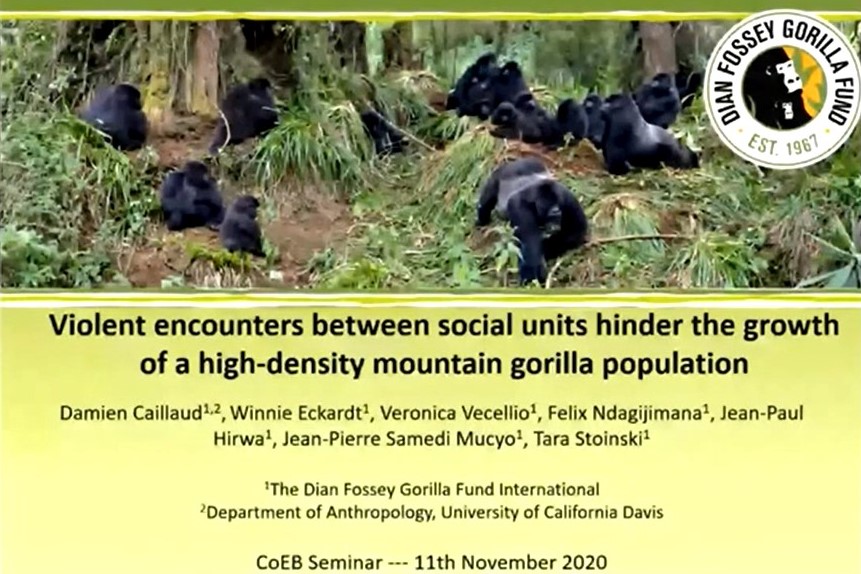
Biography
Jean Paul Hirwa is currently the gorilla program manager at Karisoke Research Center, a program of The Dian Fossey Gorilla Fund in Rwanda, overseeing all the gorilla monitoring and protection activities. This involves management of Fossey Fund field staff including gorilla trackers, antipoaching teams and research assistants. He coordinates daily monitoring of every individual gorilla monitored by Karisoke and oversee long-term data collection on gorilla demography, behavior and ranging patterns.
He joined the field of gorilla conservation 10 years ago first as an intern with the Mountain Gorilla Veterinary Project (Gorilla Doctors) then as a research assistant with Karisoke. He was involved in research on the demography, behavior and ecology of mountain gorillas as well as the threats that gorillas face in their habitats. Beside his work with mountain gorillas in Rwanda, he supported and interacts with Fossey Fund teams working in the conservation of Grauer’s gorilla in D.R. Congo.
He completed his master’s studies in 2017 in Tropical Biodiversity and Ecosystems thanks to a scholarship from the European Commission through an Erasmus Mundus master’s program (TROPIMUNDO). This program allowed him to attend courses at different universities and higher learning institutions in France, Cameroon and Belgium. For his thesis research, he studied foragingrelated interactions between arboreal monkeys and terrestrial mammals on Barro Colorado Island in Panama.
Jean Paul is committed to contribute in conserving biodiversity in general and gorillas in particular through research, active protection, law enforcement as well as working with communities neighboring the gorilla habitats.
